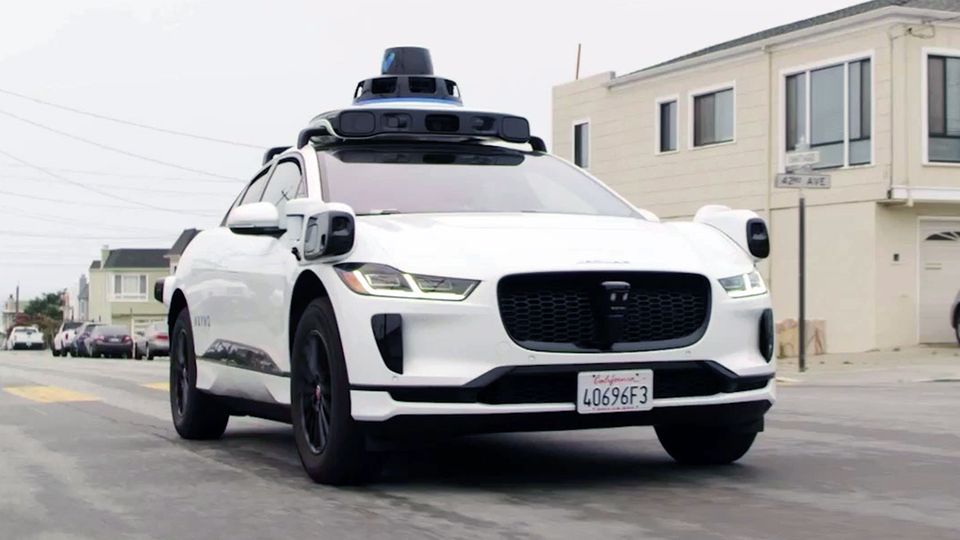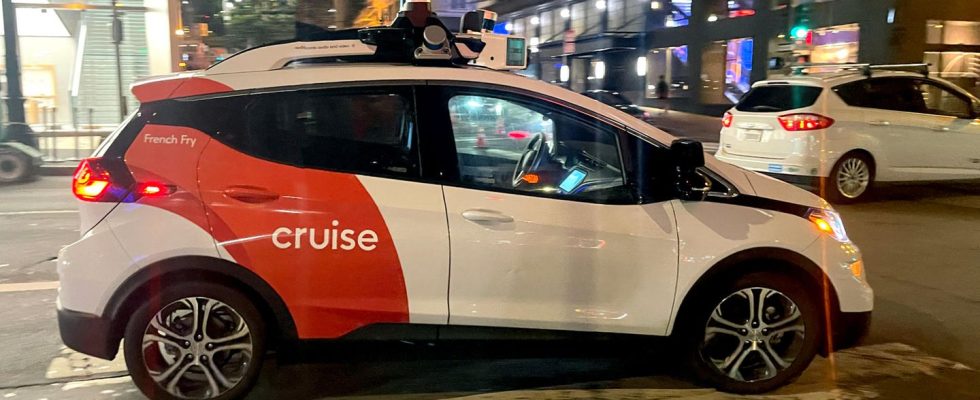san francisco
After a crash with a fire engine: Robot taxi service Cruise has to take half its fleet off the road
Until recently, robotic taxis were only allowed to drive through San Francisco at night
© Marty Bicek/ / Picture Alliance
Operators have just celebrated the breakthrough for driverless taxis: they have been allowed to drive freely in San Francisco for less than two weeks. Now comes a hard damper.
There was a spirit of optimism: on August 10, it was decided that in San Francisco driverless taxis may be used without restrictions. Now the California Transportation Authority is pulling the emergency brake. Cars from the provider Cruise had caused two accidents in one day – one of them with a fire engine in action.
The fire engine was on Thursday with blue lights on when a cruise taxi came around the corner and hit it head-on. A passenger in the taxi was injured. One “investigates the worrying incident”; according to a statement published by the authority on Friday evening (local time). This has direct consequences for the provider: at least until the end of the investigation, he has to halve his fleet, and is only allowed to use the streets of San Francisco with 50 cars during the day and 150 cars at night.
Crash despite blue light
Cruise had already posted the first details about the course of the accident on the short message service X, formerly known as Twitter, on Friday afternoon. According to this, the cruise taxi wanted to cross an intersection around ten o’clock in the evening when the traffic light was green when the emergency vehicle approached with blue lights and high speed. One passenger was injured in the accident and was taken to the hospital by ambulance. The injuries are not serious, the provider emphasized.
In a blog post, the group’s manager responsible for San Francisco, Greg Dieterich, submitted further details. The car recognized the sirens and the fire engine and tried to brake. But because the view at this intersection is very limited – “for people as well as for self-driving cars,” as Dieterich emphasizes – he was unable to stop in time. Another problem was that the fire brigade had switched to the opposite lane to avoid the cars standing at the traffic lights. In the end it was not possible for the car to prevent the collision.
However, the company assured that it would comply with the restrictions set by the authorities.

Always trouble for Cruise
The fact that self-driving cars and ambulances get in each other’s way is not entirely new. The US Transportation Authority has been investigating why Tesla’s self-driving cars keep crashing into parked ambulances (learn more here).
San Francisco’s robotic taxis have also often attracted negative attention in the past. At the end of June, the city’s fire department chief warned against giving the autonomous taxis full road clearance. They keep blocking roads, driving through barrier tapes and ignoring flashing lights, she complained (you can find out more about this here). “They’re not ready yet,” was her harsh verdict.
Only recently released
Nevertheless, on August 10, Cruise and its competitor Waymo, which belongs to the Google Group Alphabet, received official approval to offer their services without restrictions. Previously, driverless taxis were only allowed to operate at night and only in certain parts of the city. There was no explicit fleet limitation when it was released.
The first few days after the release were not very pleasant for Cruise. The very next evening, the cell phone network was overloaded by a festival, and many of the company’s cars were stranded in the middle of the intersection. Shortly thereafter, it was revealed that some users had sex in the car.


